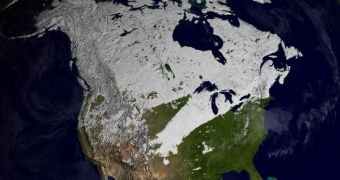Plants and animals inhabiting the Northern Hemisphere are about to hit some very rough patches, all because of climate change-induced decline in the local snow cover.
A team of UW-Madison researchers writing in a recent issue of the journal Frontiers in Ecology and the Environment explain that several of the plant and animals species inhabiting this part of the world rely on snow to get them through the harsh winter months.
Thus, the snow cover constitutes a shelter against the biting winds and the subfreezing temperatures.
According to the official website for UW-Madison, a so-called microenvironment typically forms just under the snow.
This microenvironment is referred to as the subnivium, and is characterized by both constant humidity and lack of winds.
Specialists explain that the subnivium accommodates numerous species, all of which depend on it in order to survive the winter months.
Jonathan Pauli, currently working as a UW-Madison professor of forest and wildlife ecology, commented on the importance of this microenvironment as follows:
“Underneath that homogenous blanket of snow is an incredibly stable refuge where the vast majority of organisms persist through the winter.”
“The snow holds in heat radiating from the ground, plants photosynthesize, and it's a haven for insects, reptiles, amphibians and many other organisms.”
By the looks of it, the Northern Hemisphere's snow cover for the months of March and April has diminished by roughly 3.2 million square kilometers since 1970 until present day.
Furthermore, it reaches it maximum height not in February, but in January and melts about two weeks faster.
“Snow cover is becoming shorter, thinner and less predictable. We’re seeing a trend. The subnivium is in retreat,” the UW-Madison researchers warn.
Furthermore, “Decay of the subnivium will affect species differently, but be especially consequential for those that lack the plasticity to cope with the loss of the subnivium or that possess insufficient dispersal power to track the retreating range boundary of the subnivium.”
It is believed that, in the years to come, these global warming-related changes will only take a turn for the worse.

 14 DAY TRIAL //
14 DAY TRIAL //